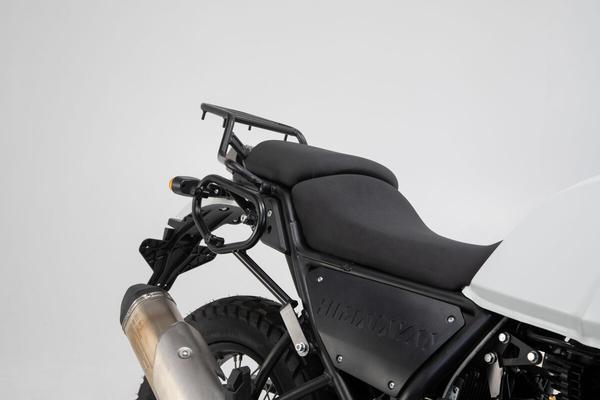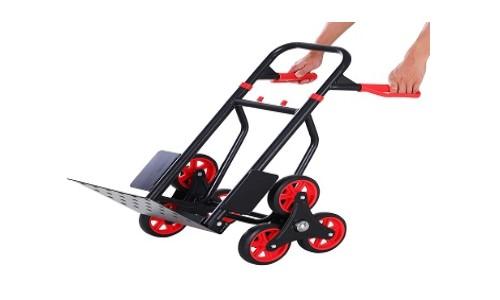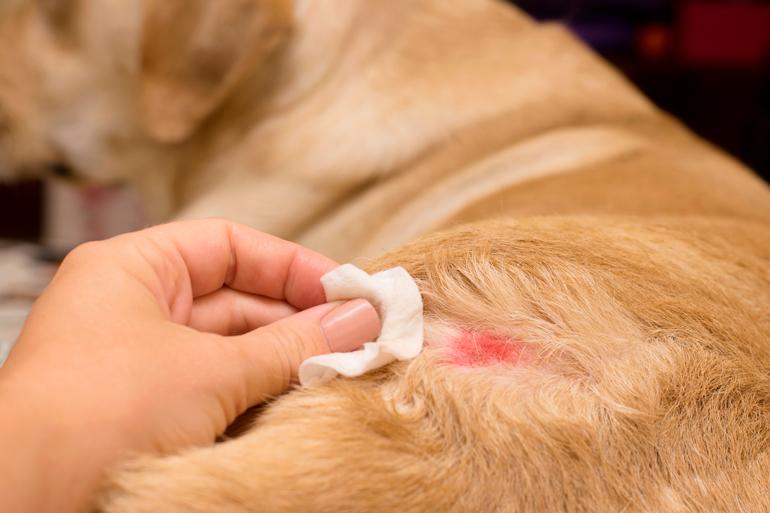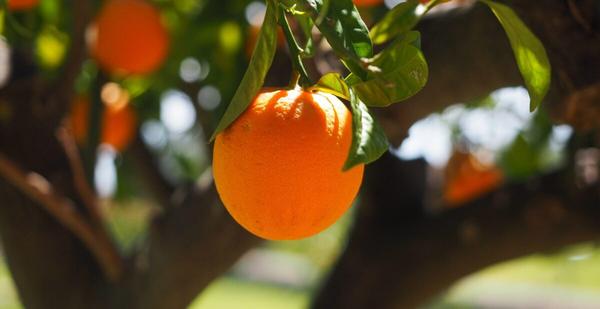15 days by Morocco with a Royal Enfield Himalayan (III) Our team
I advance south.Morocco is an elongated country and crossing it from top to bottom is something that can make you easy more than two days as you take things easy.The state of the roads does not help, and as traffic is, going through some towns and cities can become dramatic in time.
Said which ... I take things easy.I have given my two days to get to the desert, to Merzouga, so with covering 350 km in each one I have done it.The road is truffled with sections of works every few kilometers: Reasfaltar, build before non -existent, bridges where before the road went through dry channels, or redesign the layout to remove ugly curves.
The country looks like a state of perpetual works.It is as if they wanted to hit modernity, and the truth is that they get it.From one year to another you can feel the improvements in the roads of the neighboring country.The Moroccan economy goes to the stern thanks to tourism, agriculture and the increasingly important sector of automotive as the main engines.
Kilometer to kilometer I am moving absorbed in my inner self, in my thoughts, imagining what will hold the day.As out of nowhere, a group of bikers advances me at full speed.They are the Poles!It is seen that they have been early less than me.But curse!Your motorcycles run more.I make the Uves of rigor, trusting that they will remember me, from when we share a tail to climb the ferry the day before.
Morocco is a country of contrasts.The northwest is green and somewhat mountainous.In it you can cross more or less caudalous rivers, cross forests and also endless tillage land.However, as you move away southeast the thing is getting more and more arid.The point of no return is the Atlas mountain range, which truly marks the border between the Green Morocco and the Morocco of the "mud" as I call it.
Curves, straight, again curves, and innumerable provisional deviations without asphalting.This stretch of the trip can be done with any type of motorcycle if you go with a little care, but the fact of going with a trail allows mesuspension and mixed wheels make me very easy.
Speaking of wheels, I have gotten down with a couple of tires of tacos from Spain loaded in the duffel bag: some mitas e09 Dakar.My main idea when planning this trip was to give the Royal Enfield Himalayan off offroad, but really cane.
What worried me the most while I was gathering information from the comfort of my house was the passage of Ramlia, located in the south of the country, almost bordering Algeria.The step is five endless kilometers that cross the dry channel of the Daorura river and that are covered with a deep layer of Festh Fest, a sand of the finest, which almost looks like flour and in which if you do not go with taco wheels, you arelost.
My idea is to ride the mitas in some workshop that I see on the road while I go down south.I do not want to delay this operation much because as you approach Erfouz and Merzouga, the influx of travelers and tourists of the adventure is such high that the mechanics rise a little to the parra knowing that we are loading money.
Mulay Idrís
Mulay Idrís is a small city located on a hill and surrounded by even higher mountains.When I arrive, the sky is overcast and with low clouds so the stamp seems almost magical.In mule idrís mass tourism has not made an appearance, still.
The fact that it is far from the main international airports such as Fez, Rabat or Marrakech have preserved it a little more from the weekend "backpack".That makes the experience of entering it is more authentic and that you can see with your own eyes what the real Morocco is like, how the inhabitants of this country live when tourism is not monopolizing the attention of the premises and part of the economic activity, something that distorts and modifies all the experience.
This city is known for two things.The first because in it is the sanctuary of the Idrisí dynasty, the first Muslim to settle in Morocco.History says that Idrisí I was great -grandson of Ali, and this in turn was a son -in -law of the prophet Muhammad.
Mulay Idrís - The Sanctuary of the Idrisí dynasty is the green building of the center
That is why the city has a certain influx of pilgrims.The sanctuary cannot be accessed if you are not Muslim, but you can see very well from one of the high hills that surround the city and the view is spectacular.
The other charm are the Roman ruins of Volubilis a couple of kilometers.I remember when I visited them a couple of years ago in the company of a Canadian girl.She was impressed by the mosaics, the columns, and the rest of the 2000 -year -old buildings, to which I replied: "Bah, I have something similar to 40 kilometers from home".
Even so, it is a highly recommended visit if you have time.It reminds you how much the corduroy were departed..000 years throughout Mare Nostrum, and that its civilization did not cover Europe only, but also dominated the entire North Africa.

Volubilis ruins
Ascending on the road that goes up to Mulai Idrís and I see a tire workshop is my chance!.I think it is still a bit soon to move on to the taco wheels, but the desire to release new shoes and the curiosity to see how they go and go to them is stronger.
The workshops in Morocco are not like the ones we know in the West. Muchas veces el local es diminuto y tiene sólo 10 ó 20 m2, lo justo para almacenar las herramientas y un pequeño stock de las piezas más corrientes que suelen fallar, y también de algunos neumáticos para cambiar (que casi siempre están ya usados).
When I arrive, they are changing the rubber to an old Mercedes who is parked in the road's arcén and lifted with a cat.I stop and try to talk to the kid who is working.He does not understand or English potato.I try the Spanish, either.
Nothing happens, I turn to the universal language: mimicry.I unleash a duffel wheel and do how I put it on the tire, next to which it is now mounted.Uncle Capisce in a femtosegund.
Take four old keys, a couple of timbers and start disassembling the wheel.It is incredible the lack of tool that these people have, but it is even more incredible how they supply him with skill and ingenuity.Of the need to make virtue, which is said.Bad news, begins to spark.The entire operation is taking place on the pedestrian sidewalk, so it's time to get wet.
In half an hour I already have my taco wheels placed and the mixed back, in the duffel bag.He asks me for four euros for the operation, but I give him something else, that the uncle has worked and also in Spain asked me for doing this.
A lot of rain, a lot of "fun"
I go direction to Mequinez or Mecknes as it appears on the signs, one of the four imperial cities of the country.My previous experience with taco wheels is almost nil, but everything I have read online says that with rain they are a "chestnut".To put the most exciting and dangerous things, the tires are new and have a small layer of wax on the surface that will take tens of kilometers to disappear.
It is the perfect storm, and I do not mean that of heaven.In the first curves I have a couple of fat scares.The motorcycle does not grab anything, but nothing at all.The situation is repeated a couple of times.I go to about 80 km/h and I have to stop something to take the next turn, but since I have no grip, it is to caress the handle and the pedal, and the ABS already jumps without even feeling that the motorcycle is braking.
When tumbo slightly to take the curve, the same thing happens, the wheels leave laterally.This means that the motorcycle cannot be tilted practically and that the speed at which I can take them is ridiculously low.On a couple of occasions I have to open a lot, invading the opposite lane and almost getting out of the shoulder on the other side.Good luck no one came.
It is clear that I can't continue like this, but I'm in the middle of nowhere and stop is not an option.Mequinez is only 20 kilometers so I will try to get there, and if I keep raining I will make it night, because it is impossible to drive like this.
The most difficult, stressful and agonized 20 kilometers of my life begin.The first thing I do is lower the rhythm, sometimes I go to 30 or 40 km/h.The speed is desperate and I think I can go more cheerful, but as soon as another curve comes, physics reminds me of the harsh reality.The thing goes a lot to the turns and start stopping a lot before.
When I go slowly I take the game to the rubber and start circulating in that thin line in which the wheels are having grip losses almost constantly, but since the speed is not very high it gives you time to correct and maintain the situation under control.Good luck that the Royal Enfield Himalayan comes with ABS, otherwise my falls in this section could not have had the fingers of one hand.
Little by little the sky is going down, and the driving master in low adhesion conditions that I just did get me to feel more confident to the controls.I get to a roundabout and see a restaurant.It seems something pijo for the Moroccan standards, but what the hell I want to celebrate that I am still alive!.
It has the typical grill outside where there is a kid cooking grilled meat.Inside the building there is what we could consider a kind of primitive butcher shop with the meat at a counter at room temperature or directly hanging from hooks on the roof.Of course, flies are legion.I have to go there and say how much meat I want, and what kind of.
As I am anxious, I ask half a kilo of lamb.The Lord gets to work.A couple of minutes later he takes it to the boy from the embers to cook him.I sit on the Terracita, who has come again the sun.Meanwhile I am satisfying my hunger with the bread and the olives that a young waitress has put at my table.The olives are the universal incoming of Morocco.
When the lamb arrives I am eagerly devouring it.In these arrives a white and shiny Audi to the place, with French registration.It must be the cleanest car in the whole country.A medium -sized Arab man is lowered, dressed in watch, glasses and expensive clothes.From the back of the back an old woman is lowered, also dressed in an ostentatious way.
I imagine that they are Moroccies of those who went to Europe in search of a better life, and that from time to time they return to their homeland with their pocket much more charged than that of their fellow citizens.I have not met that time, but I imagine that in Spain this scene would be repeated with the Swiss emigrants when they returned home.
After a good comilona and six euros less in the pocket (a little expensive) I continue my trip.MEQUINEZ crosses.He is reputed to be one of Morocco's less safe cities along with his neighbor Fez.Last year here I was stolen from my passport so I can corroborate this statement to some extent.
Bab Mansour door (Mekinez).Photo taken on the previous trip I made to Morocco with my Honda Wave 110 I (Offroad Edition)
Atlas smells
To go down to the desert from Tangier there are two possibilities.By Mequinez as I am doing now, or diverting you slightly eastward to go through Fez.Mequinez is somewhat shorter in kilometers, but it is true that as a city to visit, Fez has more charm and perhaps more authenticity with its three medinas, its labyrinthical streets in which it is impossible not to get lost and its great mosque University of Qarawiyyin.
Mequinez is something smaller, but it also has its interest.One of its greatest attractions is Lahdim Square with the great Bab Mansour door, coroning it, which occupies a whole side of it.This square is not as big as the mythical Yama Plaza el Fna in Marrakech, but it is still the neuralgic center of the city and a bullir of activity and interesting things.
Lahdim Square in Mequinez
In any case, I am passing through and I do not want to stop in either, since I know them well from previous trips.My goal is the desert, and cross it with my brand new Royal Enfield Himalayan.I'm still in Mequinez and it's five in the afternoon.I have numbers and I think it gives me time to arrive in Azrú with the last light of the day.I don't delay the gas with decision.They are about 70 km without great complications.
Azrú is an atypical city in Morocco.Is at the skirts of the Atlas and has a rather rainy microclimate.It is known by the majestic cedar forests that surround it and give it a very rollito of Atlantic climate.After giving a couple of closed forks, I see it down there, stuck in the valley and surrounded by mountains.
Just behind her is the mountain port that gives the departure gun to the Atlas mountain range and is well known for the reserve of monkeys that live in those forests, and that delight the curious tourists who stop to photograph them.That is what will wait for me tomorrow, but today it's time to sleep in Azrú.
I enter the main avenue of the city.There is something that catches my attention whenever I come.To a certain extent it reminds me a little of Europe, to be at home, especially for architecture, because buildings have tiles and roofs inclined to two and four waters, something really complicated to see in Morocco.The architecture is given an air to ours, although if the eye you see that Moroccan bureaucism everywhere.It is a curious mixture.
I stop my motorcycle in the shoulder and look for a cheap hotel.I have caught the pleasure of improvising and not knowing exactly what my next movement will be until it is just beginning it.I see an interesting establishment: Hotel Ersat Azrou.It is a hospitality school that teaches young kids and also makes the hotel vece.18 euros.It is the cheapest thing I can find in this town and there I am leaving.
Photography Courtesy of Rosa María Callejón
Cold and rain: Africa is not how it came in the brochure
The day dawns gray, cold and cloudy again.I convince myself that the thing will improve when we cross the Atlas.That I am going south and that in the south it always makes good.After a copious breakfast with crossings, butter, jam and huge quantities of coffee, I start placing everything on the motorcycle.
While I am in it, the kids begin to reach class.My presence caught their attention and how I am tinging all my bartos to the motorcycle with a ton of octopus.When I have everything tied, I give the manager the key, I say goodbye and I get ready to leave.When I go outside I see a horde of sheep invading everything.I think I wait a little while until I spend all the stampede and if I leave that later.
It's early, it's barely ten and the city has not yet aroused.I stop buying some bread, and a pair of bananas (in one of the few establishments that have already opened) in case I find a monkey up there and I can brib it with food to take a cool photo.
I follow my path in “maximum armor” mode: I carry the rain suit, winter gloves and several polar below.It really is cold.I start my ascension to the port.Slow but safe.The asphalt is wet and I don't know if even a little higher will have frozen, since the 2.000 meters of altitude.
Shortly after leaving Azrú, the cedar forest engulfed me.It is thick and leafy vegetation.It is impossible for the sun's rays to go through it and it almost seems that it has been done again at night again.These trees have an appearance as a magical forest of the movies, as if you once entered it was impossible to leave.He is threatening to the torque than attractive.
At half ascent there is a crossroads and a kind of esplanade, which at less untimely hours is usually a bullir of tourists who stop to contemplate the forest and photograph the monkeys.In addition to the foreign, there is a good provision of Moroccies selling things knowing that this is usually a mandatory stop of tourists who go down to the desert.
You can find different food stalls, very modest but economical and ideal to fill the buche.There are also people selling minerals, bananas to feed the monkeys, and even people who charge for giving donkey walks.
However, they are just over nine and both tourists and compromisers are still in bed.I only see a couple of old men sitting in a stone and protecting themselves from the cold as they can with some ponchos and layers, and curled up a lot next to each other.This is high mountain and it really is quite cold, near zero degrees.
I want to stop to sniff with the monkeys, but I do not do it here so that this good people do not get up to try to sell me something, which on the other hand they were not going to get.I remember a few hundred meters more with the motorcycle and unemployment to take some photos to the forest and in passing see if any monkey.Bad luck.The monkeys have not early.
Photography Courtesy of Rosa María Callejón
I keep up the port and suddenly I see it.A monkey in the middle of the road!There is a girl photographing him so I stop not to scare him and get the photo.Then she signs me with my hand to continue.I think he wants to get both of us: to my walking and monkey.
Well, I shot forward and I don't stop, it's cold and I want to pass the port as soon as possible.I still go up and the vegetation is starting to scarce.I get out of the cedar forest and right now it is all busted mountain with low grass and some water gaps here and where the flocks of goats drink.
When I get to the top I see even snow in some hills that surround the road and also to the sides of this.I can't help it and put the motorcycle inside one of these patches.All for the photo, and incidentally, minipunto for the taco wheels on this surface.But I can't entertain myself to do a lot of fool.It is still soon, but I have 390 kilometers ahead until I reach the desert and a good ration of atlas ahead.
Part 1 |From home to Africa
Part 2 |Tetuán
Part 4 |New Route Companions









1770